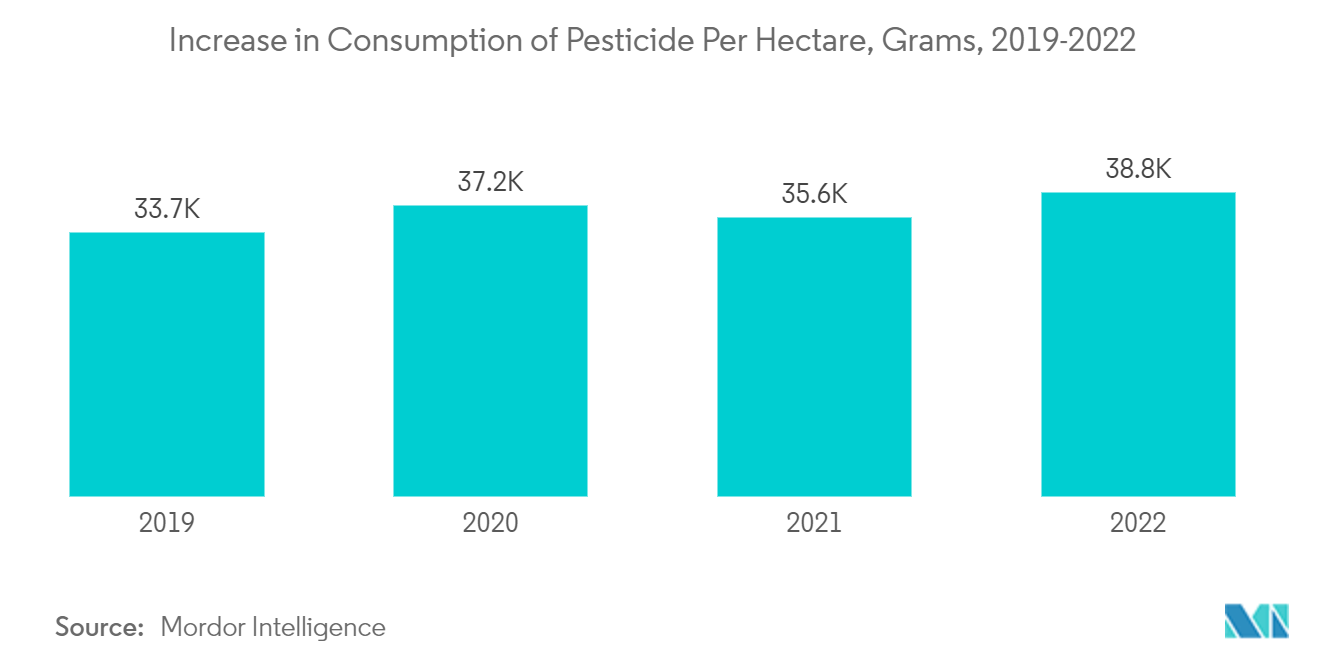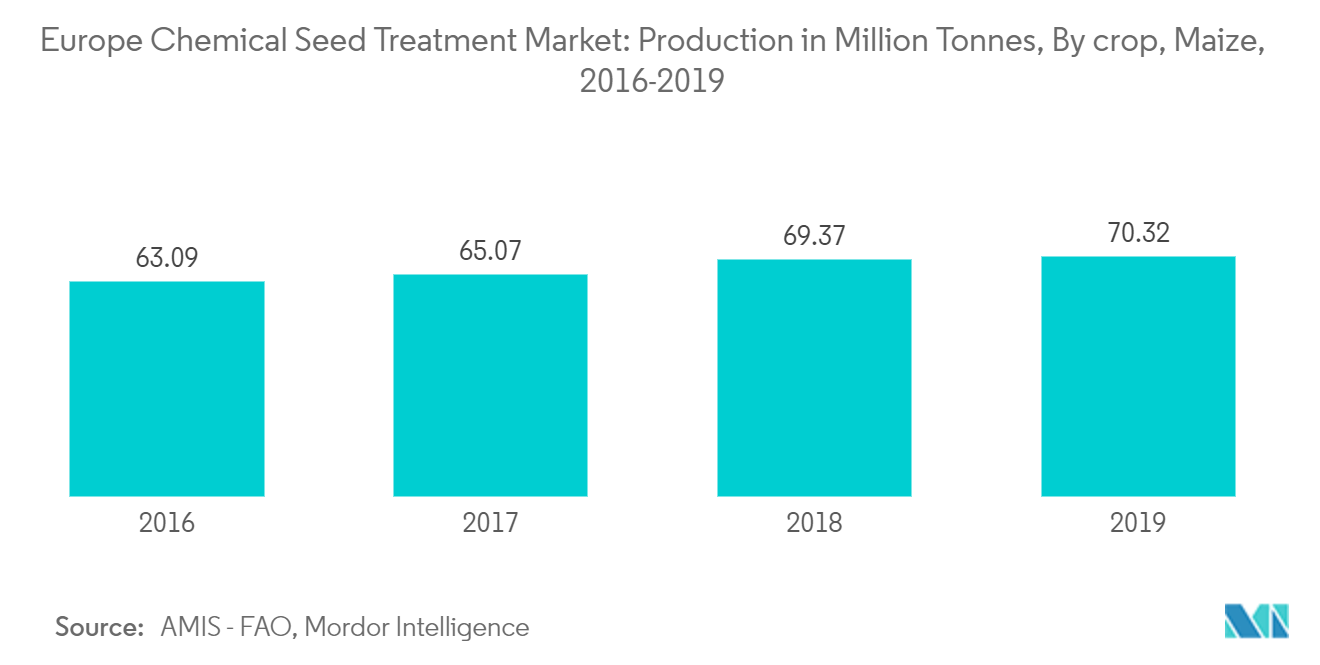Market Trends of Europe Chemical Seed Treatment Industry
Increase in the Consumption of Pesticide per Hectare
Europe has a diverse climate due to its geographical position and varying topography. Different parts of Europe have different climatic conditions, which influence the types of crops that can be grown and the pests that can thrive in those areas. In 2022, the average consumption of crop protection chemicals in this region was 38.8 kg per hectare of agricultural land.
Fungicides were the most widely used type of chemical pesticide in Europe, with an average consumption of 19.4 kg per hectare of agricultural land in the region in 2022. The prevalence of fungal diseases presents a significant risk to all crop types, as they can lead to substantial yield reductions and compromise the overall quality of harvested produce. Consequently, European farmers heavily rely on fungicides to effectively control and manage these diseases.
In 2022, the herbicide application rate was 11.7 kg per hectare, representing increased herbicide usage per hectare. This rise can be attributed to several factors, including the recognition of herbicide usage as a valuable and economically efficient approach to improve both the quantity and quality of crop yields. The herbicide application rate experienced a growth of 4.02% in 2022 compared to the previous year.
In 2022, insecticides were the third most commonly used pesticide, with an application rate of 6.9 kg per hectare. Throughout Europe, crops face significant challenges due to pests such as aphids, Colorado beetles, wireworms, and other insects, which cause substantial crop damage and loss. To address these challenges and achieve the best possible yields, insecticides play a vital role in effectively controlling and managing pests.

Maize Dominated the Chemical Seed Treatment Market
According to the Euro seed report, Maize seeds among the cereals and grains are mostly treated with chemicals due to increased attack of fungal diseases, insects, and nematodes on seedlings. High costs associated with hybrids and genetically modified seeds is a major factor driving the growth of the seed treatment market, globally. Seed treatment is being increasingly considered by farmers as a mode to protect investments made on good quality seeds, due to an increase in regulatory issues relating to fumigation, as well as the foliar application of pesticides. The cost of seeds is expected to increase, owing to an increase in the demand for high-quality seeds, with desirable agronomic traits. Both companies and farmers are ready to spend on seed treatment solutions, in order to save high-quality seeds. According to USDA estimates of 2017, corn seeds cost about 300% since 1995, while the yield grew by only 35%. Framers are trying to cut down operating costs by selecting seeds that do not require multiple doses of chemicals. The initial protection of these engineered seeds is ensured by using seed treatment products.


